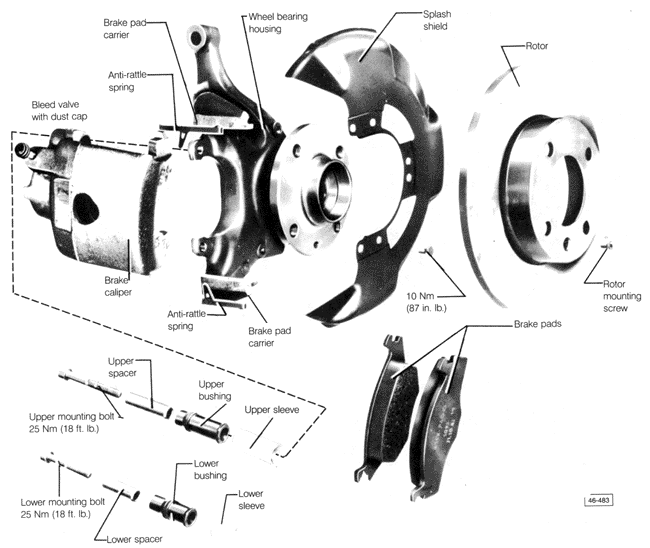5. Front Disc BrakesEach front disc brake uses a floating single-piston caliper. When the brakes are applied, the caliper piston pushes the inside brake pad against the rotor. The floating caliper body moves at the same time, pulling the outside brake pad against the rotor. Two versions of this basic disc brake design are used on the Volkswagens covered by this manual. Fig. 5-1 is an exploded view of the most common front disc brake version, used on all except 1989 and later 16V models. The brake pads move on the brake pad carriers which are part of the wheel bearing housing. The caliper fits over the brake pads and is mounted to the wheel bearing housing on bushings which allow it to float. The disc brake assemblies on GTI, Jetta GLI, Jetta Carat, and 16V models feature a thicker, ventilated rotor. Air passages cast into the rotor help dissipate the heat generated by heavy braking.

A newer version of the floating disc brake, found only on 1989 and later 16V models, is shown in Fig. 5-2. A separate brake pad carrier is bolted to the wheel bearing housing, and the caliper floats on bushings in the pad carrier. Because the front brakes do more of the work of stopping the car, they are likely to wear faster and require service more frequently than the rear brakes. The brake pads and rotors are subjected to the greatest wear, and are the components most often needing attention. The brake pads are designed to be routinely replaced as they wear out. While it is possible to restore the brakes by replacing only the brake pads, full braking performance and longevity can only be achieved if the rotors are resurfaced or replaced at the same time.

|